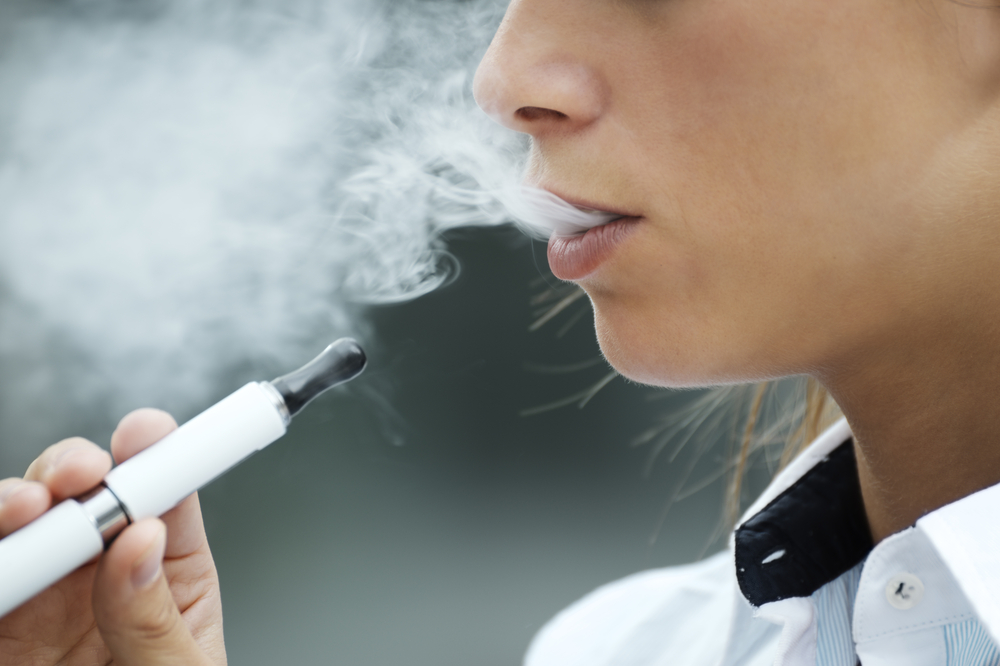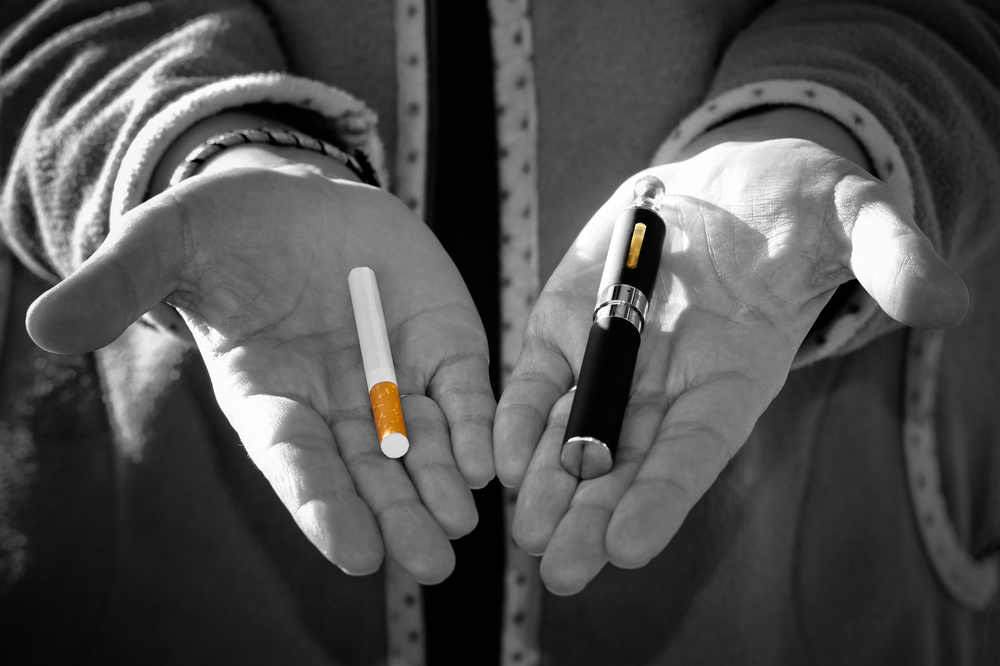Tobacco smoking has been around for centuries, but as society progresses, so do the methods of inhaling nicotine.
With the rise of e-cigarettes and vaping, tobacco smokers now have a new way to indulge in their nicotine addiction.
However, there is a growing concern about the safety of vaping and how it compares to traditional smoking.
In this article, we will dive deep into the effects of vaping and cigarette smoking on lung health.
We will explore the differences between the two methods, how they impact your lungs, and what you can do to keep your lungs healthy.
By the end of this article, you will have a better understanding of the risks associated with smoking cigarettes and vaping and how you can take steps to protect your lung health.
Vaping vs Cigarettes: What’s the Difference?
Cigarettes and e-cigarettes, or vapes, are two different methods of consuming nicotine.
Cigarettes are made up of a blend of tobacco, additives, and other chemicals, which are ignited and then inhaled by the smoker.
In contrast, vaping involves heating a liquid (often containing nicotine, flavorings, and other chemicals) to create a vapor, which is then inhaled by the user.
Unlike traditional cigarettes, e-cigarettes do not contain tobacco, which is the primary source of harm in smoking. They are designed as highly efficient electronic nicotine delivery systems.
They are marketed to high school students in particular as a harmless alternative to cigarette smoke however the centers for disease control recommends the following: Youth and young adults and pregnant women should not use e-cigarette products.
However, vaping is not harmless and poses a significant risk to lung health, as the vapor can contain harmful chemicals such as formaldehyde, acrolein, and other toxicants.
Additionally, the long-term health effects of vaping are still largely unknown, as the devices have only been around for a relatively short time.
Furthermore, both cigarette smoking and e-cigarette use can lead to nicotine addiction, which can have a detrimental effect on overall health.
While vaping is often marketed to high school students as a safer alternative to smoking, it is essential to recognize that it is not a completely harmless option.
Ultimately, the choice between cigarettes and vaping is a personal one, but it is important to weigh the risks and benefits of each option before making a decision.
How Cigarettes Affect Your Lungs
Cigarettes have been a popular form of nicotine consumption for decades, but the harm they can cause to the lungs is significant.
When users inhale smoke from a cigarette, they inhale over 4,000 chemicals, including tar, carbon monoxide, and nicotine.
These chemicals can lead to a range of respiratory issues, including chronic obstructive pulmonary disease (COPD), emphysema, and lung cancer. The tar present in cigarette smoke can also build up in the lungs, causing inflammation and reducing the lung’s ability to function correctly.
The process of smoking can also cause irritation and damage to the airways, leading to a persistent cough and phlegm production. Additionally, smoking can cause shortness of breath, wheezing, and decreased lung function.
The health risks of smoking are significant, with smokers being at a higher risk of heart disease, stroke, and many other health conditions. While the negative effects of smoking can be daunting, the good news is that quitting smoking can lead to significant improvements in lung health.
Within a few weeks of quitting smoking, lung function begins to improve, and the risk of developing smoking-related illnesses decreases.

What is COPD?
Chronic Obstructive Pulmonary Disease, or COPD, is a chronic disease that affects millions of people worldwide. Patients who suffer from COPD have a higher incidence of and mortality from cardiovascular disease.
It is a chronic condition that is often caused by long-term exposure to irritants such as cigarette smoke, air pollution, and workplace dust and chemicals. COPD can cause a variety of symptoms, including coughing, wheezing, shortness of breath, and chest tightness.
As the disease progresses, these symptoms can become more severe and can significantly impact a person’s quality of life. COPD is a progressive disease, which means that it can worsen over time.
E-cigarette liquid is is known to contain propylene glycol, a chemical that is known to damage epithelial cells in the small small airways of the lung which is particularly challenging for people who suffer from COPD.
There is currently no cure for COPD, but there are various treatments available that can help manage symptoms and improve lung function. These can include medications, oxygen therapy, pulmonary rehabilitation, and lifestyle changes such as quitting smoking, avoiding irritants, and engaging in regular exercise.
How Vaping Affects Your Lungs
The use of e-cigarettes, or vaping, has rapidly gained popularity as an alternative to conventional cigarettes and as nicotine replacement products. However, the impact of vaping on lung health is still relatively unknown. Vaping devices work by heating a liquid, which is then inhaled as a vapor.
The vapor can contain various chemicals, including nicotine, flavorings, and other additives. These toxic chemicals can cause harm to the lungs, as they can cause inflammation, irritation, and damage to the airways.
Studies have shown that vaping can lead to respiratory issues such as coughing, wheezing, and shortness of breath. It is also well understood that vape products contain heavy metals like arsenic, chromium, nickel, and lead which have been linked to increased cancer risk.
Additionally, some of the chemicals present in e-cigarette vapor can cause lung inflammation and reduce lung function. Recently, there has been a rise in cases of severe lung illnesses related to vaping, with many people suffering from acute respiratory distress syndrome (ARDS).
The long-term health risks of vaping are still not fully understood, and further research is needed to determine the full extent of the risk to lung health. While vaping may be seen as a safer alternative to smoking, it is essential to understand that it is not a completely risk-free option.

What is ARDS?
Acute Respiratory Distress Syndrome, or ARDS, is a serious lung condition that can develop rapidly in response to an injury or illness. It occurs when the lungs become inflamed, and fluid accumulates in the air sacs, making it difficult for oxygen to pass into the bloodstream.
ARDS can be caused by a variety of factors, including pneumonia, sepsis, trauma, and inhalation of toxic substances. Symptoms of ARDS can include shortness of breath, rapid breathing, and low oxygen levels in the blood. ARDS can be life-threatening and requires immediate medical attention.
Treatment for ARDS may include mechanical ventilation, oxygen therapy, and medications to reduce inflammation in the lungs. In some cases, patients with ARDS may require treatment in an intensive care unit.
While the mortality rate for ARDS can be high, early diagnosis and treatment can improve outcomes. It’s important to be aware of the symptoms of ARDS and to seek medical attention if you are experiencing any respiratory issues.
The Link between Vaping and COVID-19
New research suggests that vaping may increase the risk of contracting COVID-19, particularly among teenagers and young adults.
According to a study published in the Journal of Adolescent Health, young people who had used e-cigarettes were found to be five to seven times more likely to test positive for the virus than non-users.
This increased risk may be due to the fact that vaping can weaken the immune system and damage the respiratory tract, making individuals more susceptible to respiratory infections like COVID-19.
In addition, the hand-to-mouth behavior associated with vaping may increase the risk of viral transmission. While more research is needed to fully understand the link between vaping and COVID-19, the study highlighted the potential dangers of using e-cigarettes during the pandemic.
The findings underscore the importance of taking steps to protect one’s health, including avoiding tobacco and e-cigarette use, practicing good hygiene, and following public health guidelines to prevent the spread of COVID-19.
The Link Between Vaping and Weed
Recent data suggests that there has been a significant increase in the number of high school seniors who are using e-cigarettes to vape weed.
According to a survey conducted by the National Institute on Drug Abuse, the percentage of high school seniors who reported thc vaping products within the past month increased from 7.5 percent in 2018 to 14 percent in 2019.
This is a concerning trend, as vaping marijuana can be more potent than smoking it and can have a more rapid onset of effects. In addition, some vape pens and cartridges may contain harmful chemicals and additives, which can have negative health effects.
The rise in the use of the vaping products to consume marijuana highlights the need for greater awareness and education around the potential risks and harms associated with this behavior.
Parents, educators, and health professionals should work together to provide accurate information about the risks and benefits of various methods of using marijuana, and to help young people make informed decisions about their health and well-being.
How to Keep Your Lungs Healthy
Maintaining good lung health is essential to overall well-being, and there are several things you can do to keep your lungs healthy. First and foremost, quitting smoking regular cigarettes or vaping is one of the most effective ways to improve lung health.
The benefits of quitting are numerous and can include improved lung function, decreased risk of lung cancer, and reduced risk of heart disease and stroke. If you are struggling to quit smoking or vaping, seek support from family, friends, or healthcare professionals.
Additionally, avoiding exposure to secondhand smoke is important for maintaining lung health, as secondhand smoke can be just as harmful as smoking itself. Engaging in regular exercise can also help to improve lung function, as physical activity strengthens the muscles used in breathing.
If you are experiencing symptoms such as coughing, wheezing, or shortness of breath, it may be a sign that your lungs are unhealthy. Seeking medical help is crucial in these situations, as respiratory issues can quickly escalate if left untreated.
Your doctor may recommend various treatments, including medications, inhalers, or breathing exercises. Remember, the earlier you seek treatment, the better the outcome.
By taking steps to maintain good lung health and seeking medical help when necessary, you can protect yourself from respiratory issues and improve your overall quality of life.
Conclusion
In summary, it’s important to understand the impact of smoking and vaping on your lung health. Regular cigarettes can cause significant harm to the lungs, leading to respiratory issues such as COPD, emphysema, and lung cancer.
Vaping, on the other hand, is still a relatively new practice, and the long-term effects on lung health are not yet fully understood. It is important to be aware of the symptoms of unhealthy lungs and to seek medical help if necessary.
Maintaining good lung health is essential to overall well-being, and there are several things you can do to keep your lungs healthy, including quitting smoking or vaping, avoiding secondhand smoke, and engaging in regular exercise.
By taking care of your lungs, you can improve your quality of life and reduce the risk of respiratory issues.
It’s important to make informed decisions about smoking and vaping and to seek support if you need help quitting.
Finally, we encourage readers to discuss and engage with the topic of lung health, whether it’s by sharing their own experiences or asking questions.
Let’s work together to raise awareness about the importance of lung health and take the necessary steps to protect ourselves and our loved ones.
References
- “What is COPD?”: American Lung Association. (n.d.). What is COPD? https://www.lung.org/lung-health-diseases/lung-disease-lookup/copd/learn-about-copd#:~:text=COPD%20(chronic%20obstructive%20pulmonary%20disease,not%20fully%20reversible%20or%20curable.
- “What is ARDS?”: American Lung Association. (n.d.). Acute respiratory distress syndrome (ARDS). https://www.lung.org/lung-health-diseases/lung-disease-lookup/ards#:~:text=ARDS%20(acute%20respiratory%20distress%20syndrome,from%20severe%20shortness%20of%20breath.
- “Vaping may increase a person’s risk for cavities and tooth decay…”: LaMotte, S. (2021, January 14). Vaping may increase risk of tooth decay and gum problems, study suggests. CNN. https://www.cnn.com/2021/01/14/health/vaping-cavities-gum-problems-wellness/index.html.
- “Vaping is not just a small risk for coronavirus…”: Miller, Z. (2020, August 11). Teens who vape at higher risk for COVID-19, but risk is small, study shows. ABC News. https://abcnews.go.com/Health/teens-vape-higher-risk-covid-19-risk-small/story?id=72296422.
- “Between 2018 and 2019 — the percentage of high school seniors who reported vaping pot within the past month rose from 7.5 percent to 14 percent.”: Johns Hopkins Medicine. (2020, September 10). Vaping marijuana linked to lung injuries. https://www.hopkinsmedicine.org/health/wellness-and-prevention/vaping-marijuana-linked-to-lung-injuries.





